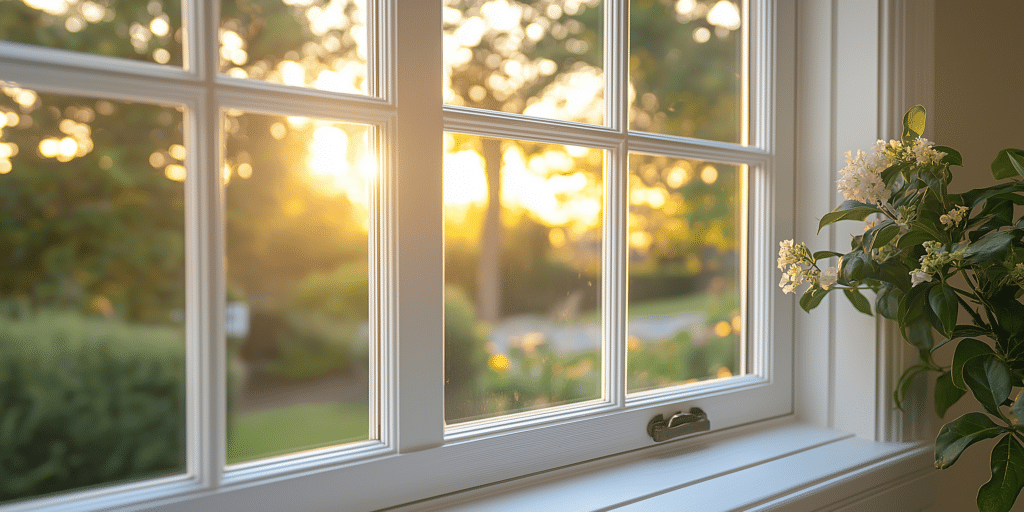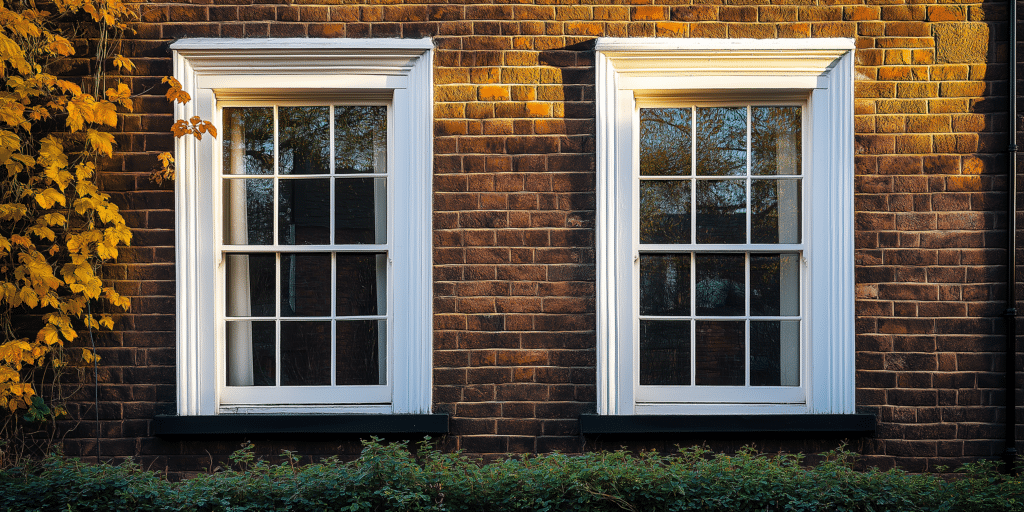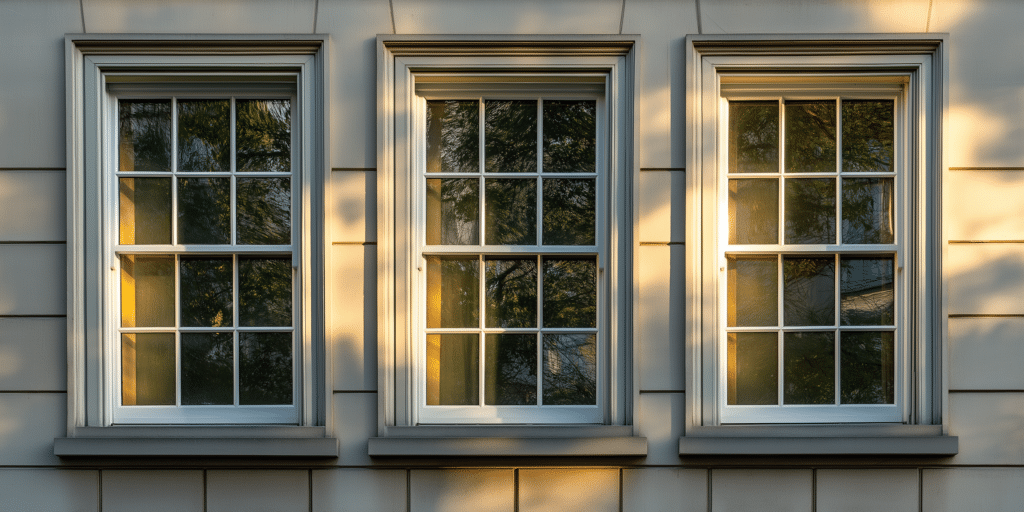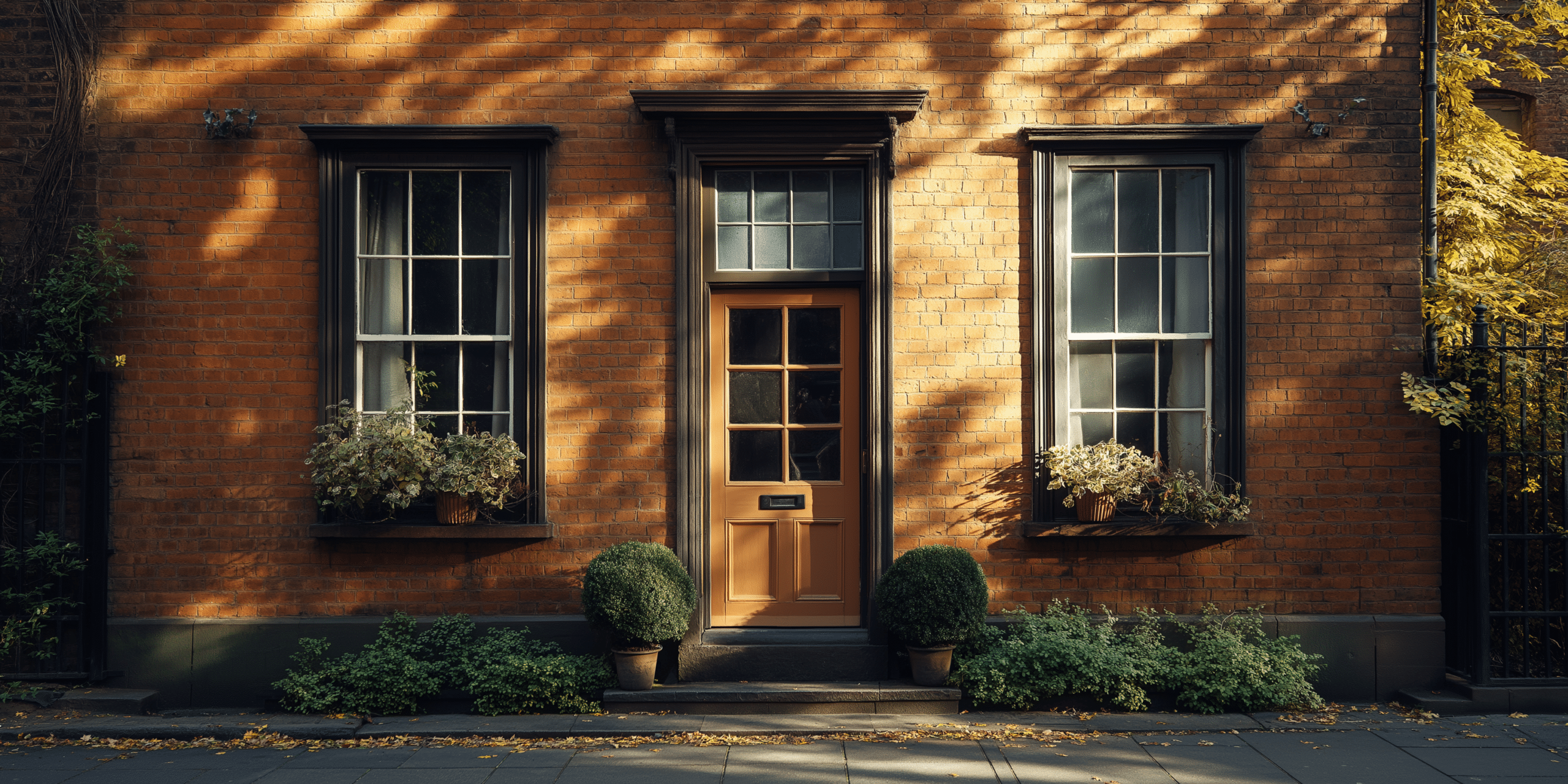Optimising Sash Windows Weatherproofing for Energy Efficiency and Comfort

Sash window weatherproofing is crucial in maintaining the energy efficiency, comfort, and overall integrity of period homes, especially those with traditional architectural features. It helps reduce heat loss during colder months and prevents draughts and moisture ingress that can lead to damp problems or wood rot. Studies have shown that weatherproofing can reduce heating bills by up to 20% while decreasing energy consumption and carbon emissions by 25% (Energy Saving Trust).
How to Identify Draughts in Sash Windows
One of the first steps in sash window weatherproofing is identifying potential air leaks. A simple method involves using a candle or smoke test to trace where the cold air is coming from. Did you know even the smallest gaps in the window frame can lead to significant heat loss? As the flame flickers near the window edges, it reveals the areas most vulnerable to draughts.
Examine the meeting and bottom rails around the pulley system for gaps. Another question might be, what visible signs indicate a lack of insulation? Look for condensation, particularly on single-glazed panes, which suggests poor insulation and potential draughts. Furthermore, inspect the window beading, parting beads, and the sash box, as these are often weak points where air can seep through. According to This Old House, identifying these gaps and using foam insulation can help reduce air leakage by 50% while ensuring a more comfortable living environment.
Best Materials for Sash Window Weatherproofing
The choice of materials is critical. High-quality draught-proofing strips made from durable silicone or rubber are ideal for sealing the moving parts of sash windows. Why use silicone? It’s known for its flexibility, longevity, and excellent adhesion to wooden and metal surfaces, ensuring a secure, airtight seal.
Another question might be, can I improve insulation without compromising the appearance of my period property? Yes! Installing secondary glazing is an excellent solution for preserving the aesthetic of Georgian or Victorian sash windows while enhancing thermal efficiency. Secondary glazing involves fitting an additional pane of glass inside the original window frame, which creates an insulating air gap, reducing heat loss significantly. Expert sources highlight that combining secondary glazing with spring bronze weatherstripping offers the best of both worlds—thermal efficiency and aesthetics.
Consider installing weather seals around the window frame and between the meeting rails for added weatherproofing. These seals protect against air and water infiltration, ensuring your home remains warm and dry, even during the harshest British winters. Stormproofing can prevent water ingress in 98% of cases, preserving window integrity (This Old House).
Energy Efficiency Benefits of Weatherproofing

The benefits extend beyond reducing draughts. Did you know that addressing gaps and improving insulation can lower your energy bills by up to 20%? This is achieved by minimising heat loss, ensuring that your heating system doesn’t have to work as hard to maintain a comfortable temperature.
Sealing your sash windows reduces your home’s carbon footprint by decreasing the energy needed to heat your home. Research by the Energy Saving Trust shows that energy-efficient homes can reduce their carbon emissions by up to 25%, contributing to a more sustainable living environment.
Properly sealed windows are less susceptible to moisture ingress, which can cause rot and decay in wooden frames. This extends the life of your windows and maintains their structural integrity.
Professional Weatherproofing vs. DIY: Which Is Right for You?
You might ask yourself, should I attempt to weatherproof my sash windows or hire a professional? This decision depends on several factors, including your budget, time availability, and experience with DIY projects. DIY weatherproofing can be cost-effective for smaller jobs, such as applying draught-proofing strips or installing window seals. However, you may wonder, is it worth the effort if you’re dealing with more complex issues, such as rot repair or secondary glazing installation?
Hiring a professional ensures that the job is done correctly and efficiently. Professionals have the tools and experience to deal with potential challenges, such as fitting secondary glazing or addressing structural damage to the window frame. While it might be more expensive initially, the long-term benefits—including improved insulation, better aesthetics, and enhanced energy efficiency—often outweigh the costs.
Step-by-Step Guide to DIY Weatherproofing
Ready to get hands-on? Here’s a step-by-step guide to weatherproofing your sash windows:
- Identify Leaks: Use a candle or smoke to locate gaps around the window frame. Move the flame along all the window’s edges; any flickering indicates an air leak. A study found that using this method can help reduce energy leakage by up to 25% in sash windows (Energy Performance in Historic Windows).
- Apply Draught-Proofing Strips: Silicone strips are highly recommended for durability and flexibility. They are ideal for sealing the edges of the moving parts in your sash windows. Experts suggest using a high-quality material to achieve up to a 40% improvement in window insulation.
- Install Secondary Glazing: Secondary glazing adds a layer of glass, creating an insulating air gap without altering the original look of the windows. Research shows that secondary glazing can reduce heat loss by 60% compared to single-glazed sash windows.
- Check Seals Regularly: To ensure your weatherproofing remains effective, check for wear and tear annually, particularly before winter. According to a report by the Energy Trust, properly maintained weather seals can last up to 10 years, providing ongoing energy savings.
Common Mistakes to Avoid When Weatherproofing Sash Windows

It’s easy to make mistakes when undertaking DIY weatherproofing. One major error is measuring incorrectly. If the draught-proofing strips don’t fit properly, they won’t seal effectively. Another common mistake is failing to clean the window frame before applying the sealant. Dirt and dust can prevent the adhesive from bonding properly, reducing lifespan.
While it’s tempting to cut costs, low-quality materials often fail after just one winter, costing you more in the long run. Investing in quality materials can save up to 30% in heating costs over several years.
The Role of Proper Maintenance in Extending Weatherproofing
Is weatherproofing a one-time job? Not quite. While high-quality materials can last for years, regular maintenance is crucial for extending the lifespan of your weatherproofing efforts. Ideally, inspect your seals annually or after extreme weather events.
Keeping your weatherproofing in good condition prevents small problems from escalating into bigger issues, such as water damage or frame rot. This regular upkeep ensures your sash windows remain draught-free and continue to provide energy savings. Experts from Historic England state that regular inspection and touch-ups can prolong sash window life by 15-20 years.
Impact of Weatherproofing on Energy Efficiency Ratings
Have you considered how weatherproofing your sash windows could improve your home’s Energy Performance Certificate (EPC) rating? Properly sealed and insulated windows improve thermal efficiency, significantly boosting your home’s EPC rating. But why is this important? A higher EPC rating helps you save on energy bills and makes your home more attractive to potential buyers, particularly in an increasingly eco-conscious market.
Research from the UK Green Building Council shows that homes with higher EPC ratings can increase property value by up to 14%. Weatherproofing is a valuable investment, particularly for older properties with sash windows, which often suffer from lower energy efficiency.
Sustainability Benefits of Sash Window Weatherproofing

Improving your home’s insulation reduces the need for excessive heating, reducing carbon emissions. According to the Energy Saving Trust, properly weatherproofed windows can reduce a household’s energy use by up to 25%, making it an effective measure for sustainable living.
In addition to reducing energy consumption, using environmentally friendly materials for weatherproofing, such as silicone strips and secondary glazing, helps to lower your home’s overall environmental impact. Dr Sarah Holmes from the UK Centre for Sustainable Construction points out, “Weatherproofing sash windows is one of the easiest ways to improve energy efficiency while preserving the heritage value of period homes.”
Advanced Weatherproofing Techniques for Period Properties
Techniques like discreet draught-proofing and secondary glazing ensure that heritage properties’ historical value remains intact while enhancing modern energy efficiency. Conservation experts favour these techniques, which are often required in Grade II listed buildings.
Have you considered using thermal curtains or window shutters? These additional solutions can enhance insulation without impacting the exterior appearance of your property. Experts at Period Living recommend these additions for draughty homes, as they can improve thermal insulation by 15-20% when used with existing weatherproofing techniques.
Final Thoughts on Sash Window Weatherproofing
Weatherproofing sash windows is not only a way to preserve the beauty and functionality of traditional homes but also a practical step towards reducing energy costs and increasing comfort. Whether you opt for DIY solutions or professional installation, the benefits are clear—your home will be more energy-efficient, comfortable, and eco-friendly.
In the long run, weatherproofing is an investment that pays off in reduced heating bills, enhanced property value, and greater sustainability. So why wait? Take the first step towards a warmer, more energy-efficient home today.




